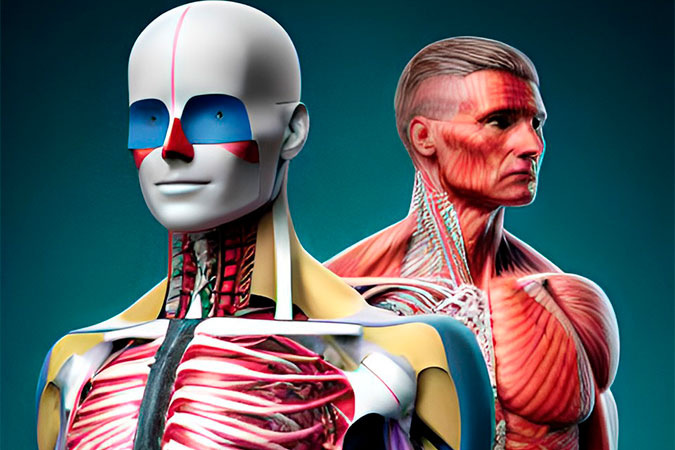Understanding Anatomy: The Key to Interpreting Clinical Observations and Medical Practice
This article highlights the importance of anatomy in medical practice, describing it as a fundamental cornerstone of medical science. It discusses both gross and microscopic anatomy, emphasizing that the understanding of these two intertwined disciplines is critical for healthcare professionals. The article underscores that studying anatomy involves more than just memorizing terms; it requires comprehension of how these terminologies fit into the larger picture of the body’s systems. Essentially, a robust understanding of anatomy allows health professionals to detect abnormalities, understand diseases, and plan appropriate treatments. The capacity to interpret clinical signs accurately, therefore, is a testament to a sound understanding of anatomy.

Understanding Anatomy
Anatomy, derived from the Greek words “ana,” meaning “up” and “tome,” meaning “a cutting,” is the study of the structure of organisms and their parts. It is a fundamental cornerstone of medical science, encompassing the examination of structures that can be observed both grossly (without the aid of magnification) and microscopically (with the aid of magnification). Traditionally, the term anatomy implies the study of gross or macroscopic anatomy, which focuses on structures visible to the naked eye. However, a complementary field, histology or microscopic anatomy, takes the study a level deeper, exploring cells and tissues through the lens of a microscope.
Anatomy: The Fundamental Basis for Medical Practice
The importance of anatomy in medical practice is profoundly irrefutable. It equips physicians with crucial insights necessary for understanding a patient’s health condition, aiding them in conducting thorough physical examinations or interpreting complex imaging techniques. It is not merely a domain exclusive to physicians; dental professionals, chiropractors, physical therapists, and others involved in patient treatment draw heavily upon their anatomical knowledge. The capacity to accurately interpret clinical observations, therefore, is the ultimate goal and proof of a robust understanding of anatomy.
Gross Anatomy Vs. Microscopic Anatomy: Two Sides of the Same Coin
The two broad categories of anatomy – gross (macroscopic) anatomy and microscopic anatomy – are intrinsically intertwined, each shedding light on different aspects of an organism’s structure.
Gross anatomy focuses on structures that can be seen with the naked eye, such as organs, tissues, and bones. It is typically learned through direct observation and dissection, and enables understanding of the physical layout of the human body, its systems, and how they interconnect.
Microscopic anatomy, or histology, on the other hand, ventures into the realm unseen by the naked eye. It examines cells and tissues, divulging the minute structures that form the building blocks of life. By understanding cellular functions and interactions, it is possible to comprehend how diseases form and affect the body.
Learning Anatomy: Observation, Visualization, and Beyond
The study of anatomy goes beyond mere memorization of terminologies. It demands a profound understanding of how these terminologies fit into a larger, coherent picture. Observation and visualization are key learning tools for this purpose. They enable students to construct a mental map of how physical structures are positioned and related to each other.
For instance, memorizing the names of the various branches of the external carotid artery is useful, but it is even more crucial to visualize the course of an artery like the lingual artery, tracing its journey from the neck to the tongue. Similarly, understanding the soft palate’s function, how it relates to the oral and nasal cavities, and its movement during swallowing requires more than just recitation of the names of its individual muscles and nerves.
The Anatomy of a Healthy Medical Professional
In conclusion, a well-rounded understanding of anatomy forms the basis of any healthcare professional’s expertise. It guides them in understanding the human body, detecting abnormalities, and planning appropriate interventions. It helps them appreciate the complex interplay between different structures in health and disease. Ultimately, the art of interpreting clinical signs accurately is not merely about knowing the facts. It is about understanding the broader context and visualizing the relationships in which these facts exist. The study of anatomy is an essential journey that bridges the gap between observing the body’s exterior and understanding the intricate mechanisms that maintain life within.











